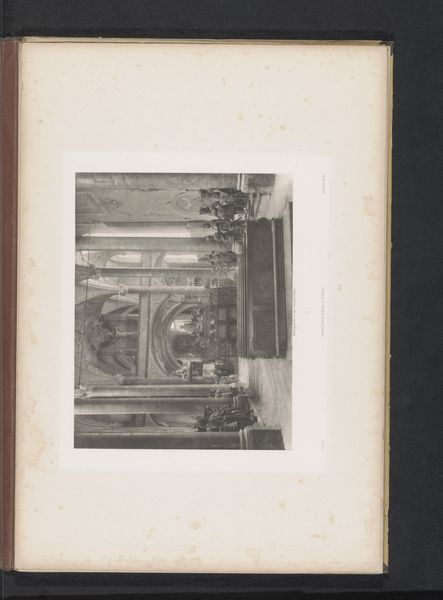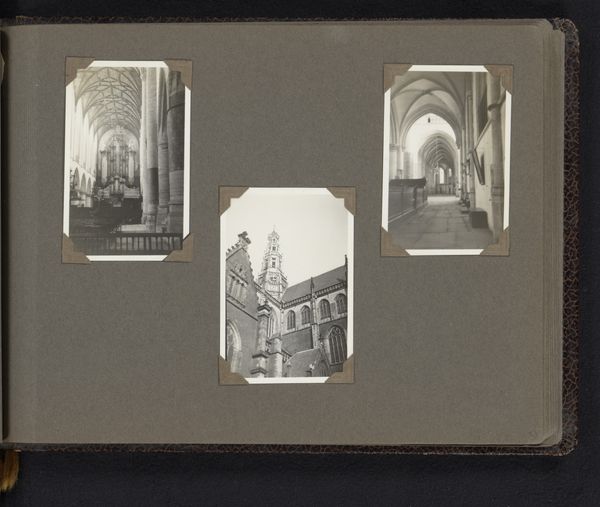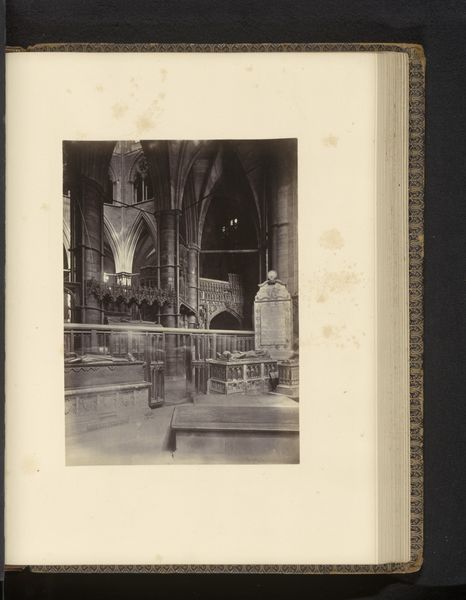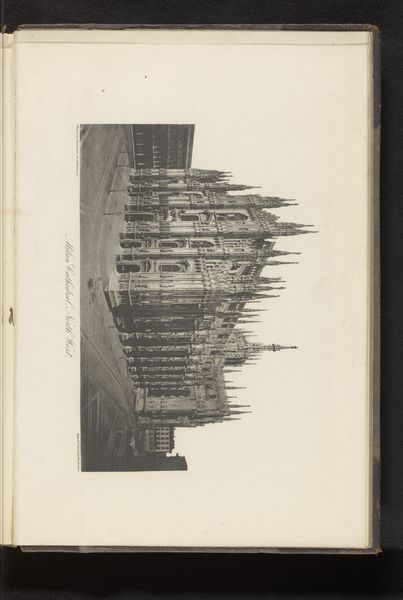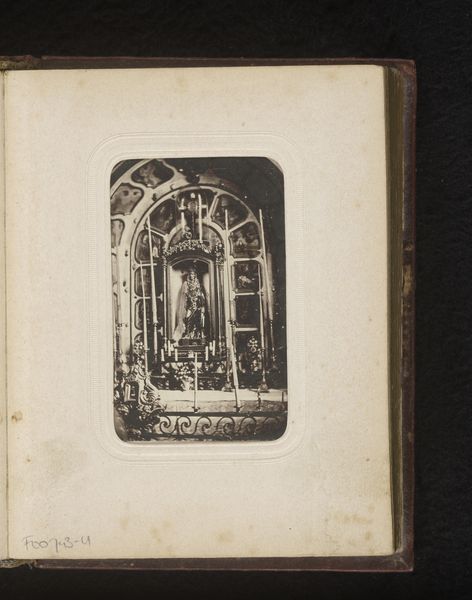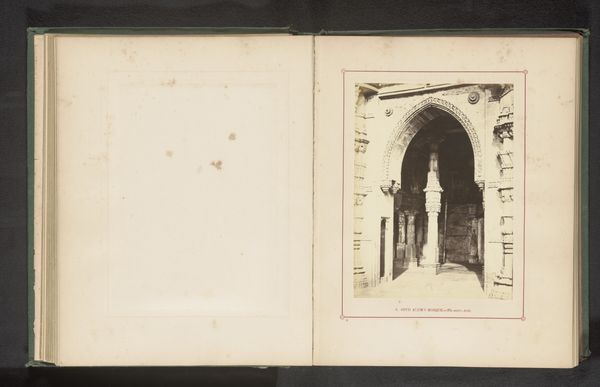
Dimensions: height 84 mm, width 51 mm
Copyright: Rijks Museum: Open Domain
Curator: At first glance, it whispers tales of ancient stones and hushed reverence. Editor: We're looking at a drawing titled "Interieur van Winchelsea Church, grafmonument", placing it sometime between 1870 and 1910. The artist is Frances Sutherland Mann, who appears to have captured an interior scene using charcoal. Curator: Charcoal suits the subject! Note how the drawing tool renders a profound sense of gothic architecture, echoing of solemn history within a sacred space. Editor: Indeed. Churches such as Winchelsea were frequently sites of historical reckoning. They represent more than just architectural wonders. These spaces, particularly in renderings like this, embody collective memory and its continual social negotiation. What purpose did Mann see for this image in circulation? Curator: Perhaps to ignite feelings, beyond purely historical or architectural interests? The stark contrast in the rendering – the dark lines against light stone—invokes the drama of light filtering through stained glass, a symbolic gesture connecting us to mortality and eternity. What is presented here is not only a historical documentation but the sensation of experiencing the cathedral. Editor: An evocative connection, I agree. The interest in Medieval artistic values had considerable popularity in the late 19th century with the development of historicism. These churches symbolized an idealised, noble past and it may be argued they offered a visual alternative to the social concerns of industrialization and urbanization during the depicted period. Curator: Then, we must question, what does such selective preservation and documentation say about our past? Churches were also sights of significant reform movements or considerable unrest in their medieval era, of which this picture contains not a shadow. Editor: Excellent point. Frances Sutherland Mann may then have been participating in this nostalgic reimagining, in pursuit of visual serenity, offering a particular, possibly whitewashed, version of heritage and history. Curator: In effect, imbuing this "interior" with external desires, turning Winchelsea Church into more than just a church. It is a historical statement made through an artistic rendition. Editor: Yes. Sutherland Mann and her contemporaries show that the way we view our history is invariably shaped by present desires. Thank you for this illuminating dive into what lies beyond the image. Curator: Likewise. Exploring the cultural narratives imbued within it is profoundly meaningful.
Comments
No comments
Be the first to comment and join the conversation on the ultimate creative platform.
